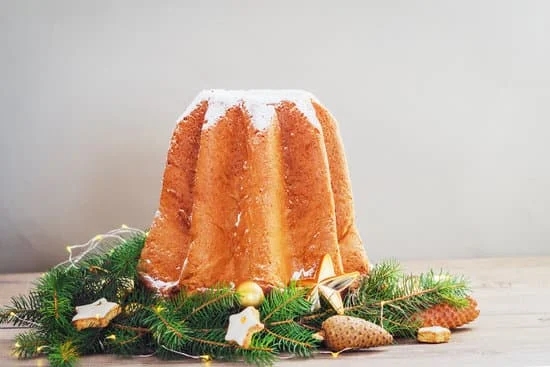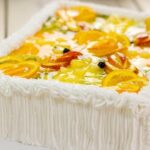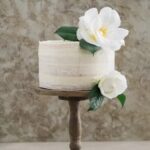What is the best frosting to decorate a cake? This question has fueled many baking enthusiasts in their quest for the perfect topping to elevate their creations. The art of cake decoration goes beyond taste, as factors like texture, stability, and color play crucial roles in choosing the ideal frosting. In this article, we will delve into the world of frosting options, from classic buttercream to elaborate fondant, to uncover the best choices for decorating cakes.
Understanding the different types of frosting is essential when embarking on the journey of cake decoration. From creamy buttercream to tangy cream cheese, each option comes with its unique characteristics and uses. Factors like taste preferences and design requirements will dictate which frosting suits your needs best. This guide will explore popular options like ganache, whipped cream, and royal icing to provide a comprehensive understanding of the diverse range of frostings available.
As we explore various frostings in this article, we will also highlight the versatility of buttercream for decorating cakes. Buttercream offers a smooth consistency that can be easily manipulated for intricate designs and creative piping techniques.
While cream cheese frosting adds a tangy depth to carrot or red velvet cakes, fondant provides a clean canvas for elaborate decorations. Each frosting option brings its own benefits and challenges when it comes to cake decoration, making it crucial to choose wisely based on your specific requirements and preferences.
Understanding Different Types of Frosting
When it comes to decorating a cake, the type of frosting you use can make a significant difference in both appearance and taste. There are several different types of frosting commonly used for cake decoration, each with its own unique characteristics. One popular choice is buttercream frosting, known for its creamy texture and versatility. Buttercream can be easily colored and piped into various designs, making it a favorite among bakers for creating intricate decorations on cakes.
Another well-loved option is cream cheese frosting, which adds a tangy flavor that pairs perfectly with certain cake flavors like carrot or red velvet. While cream cheese frosting is delicious, it may not hold up as well for intricate designs compared to buttercream. Fondant is another commonly used frosting in cake decorating, known for its smooth and sleek finish. However, some find fondant too sweet or lacking in flavor compared to other frostings.
For those looking for a richer option, ganache can be an excellent choice for more elegant cake designs. Ganache provides a glossy finish and a decadent chocolate flavor that can elevate the overall look and taste of the cake. On the lighter side, whipped cream frosting offers a fluffy texture and delicate taste but may not be as durable for intricate designs as some other options like buttercream or fondant.
| Type of Frosting | Main Characteristics |
|---|---|
| Buttercream | Versatile, easy to color, great for intricate designs |
| Cream Cheese | Tangy flavor, ideal for carrot and red velvet cakes |
| Fondant | Smooth finish but can be too sweet for some tastes |
Factors to Consider When Choosing the Best Frosting
When it comes to choosing the best frosting to decorate a cake, there are several factors that must be taken into consideration. From taste and texture to stability and color, each aspect plays a crucial role in determining the perfect frosting for your cake decorating needs. Let’s delve into these key factors to help you make an informed decision on what is the best frosting to decorate a cake.
1. Taste: One of the most important considerations when selecting a frosting is its taste. Different frostings offer varying levels of sweetness and flavor profiles.
For example, buttercream frosting is known for its rich and creamy taste, while cream cheese frosting provides a tangy twist. Fondant offers a subtle sweetness with a hint of vanilla or chocolate, depending on the variety used. It is essential to choose a frosting that complements the flavor of your cake without overpowering it.
2. Texture: The texture of the frosting can greatly impact the overall look and feel of your decorated cake. Buttercream frosting is silky smooth and easy to work with, making it ideal for intricate designs and piping techniques. On the other hand, fondant provides a sleek and polished finish, perfect for creating smooth surfaces and detailed decorations. Consider the desired texture for your design when choosing the best frosting for your cake.
3. Stability: Another crucial factor to consider is the stability of the frosting. Will it hold up well in different temperatures or climates? Buttercream frosting is known for its durability and ability to hold its shape even in warm conditions. Cream cheese frosting may require refrigeration due to its softer consistency. Fondant can withstand various environments but may crack if not handled properly. Ensure that the chosen frosting can maintain its structure throughout your cake decorating process.
The Versatility of Buttercream Frosting for Decorating Cakes
Buttercream frosting is a beloved choice for cake decoration due to its versatile nature, which allows for a wide range of piping techniques and design options. One of the key factors that make buttercream frosting stand out is its ability to hold intricate designs while still being easy to work with. Whether you are looking to create delicate floral patterns or bold geometric shapes on your cake, buttercream can be your go-to option.
Piping Techniques
When it comes to decorating cakes with buttercream frosting, the piping technique plays a crucial role in achieving the desired design. From classic swirls and rosettes to intricate lacework and ruffles, buttercream allows for various piping techniques that can elevate the appearance of your cake. With the right tools and practice, decorators can create stunning designs using buttercream frosting.
Design Options
The versatility of buttercream frosting extends beyond just piping techniques. This type of frosting can be tinted with different colors, allowing decorators to unleash their creativity and customize their cake designs according to the occasion or theme. Whether you want a soft pastel palette for a baby shower cake or vibrant hues for a birthday celebration, buttercream frosting can help bring your vision to life.
Cream Cheese Frosting
Texture and Consistency
One of the main considerations when using cream cheese frosting for intricate designs is its softer consistency compared to buttercream or fondant. While this can make it perfect for spreading or filling layers, it may not hold up as well for detailed piping work or sculpting on the cake. The softer nature of cream cheese frosting can result in delicate decorations losing their shape or definition over time.
Color Options and Stability
Another aspect to keep in mind when using cream cheese frosting for decorating is its limited color options. Due to the natural hue of cream cheese, achieving vibrant or bold colored decorations can be challenging. Additionally, the stability of cream cheese frosting under varying temperatures may affect intricate designs. It tends to soften at room temperature faster than some other frostings, which could impact the longevity of elaborate decorations on a cake.
Despite these considerations, with proper techniques and chilled cake storage, cream cheese frosting can still be used effectively for certain intricate designs. Its unique flavor profile and creamy texture make it a standout choice for specific cake flavors that complement its attributes. Ultimately, the best frosting for decorating a cake depends on the desired design intricacy, taste preferences, and overall aesthetic vision for the final product.
Fondant
Despite its visual appeal, there are some drawbacks to using fondant for cake decoration. One of the main concerns with fondant is its taste – some people find it overly sweet or lacking in flavor compared to other frostings like buttercream or cream cheese.
Additionally, fondant can be challenging to work with for beginners as it requires kneading and rolling out to achieve a smooth finish on the cake. It also does not hold up well in humid environments, which can cause it to become sticky or droop on the cake.
In terms of flexibility and creativity, fondant offers endless possibilities for decorating cakes. It can be tinted with food coloring to achieve vibrant colors or painted with edible metallic paints for a more elegant look.
Fondant also provides a blank canvas for adding embellishments like flowers, ribbons, and other decorations that can be pre-made or sculpted by hand. While fondant may not be everyone’s preferred choice when it comes to taste, its versatility in creating visually stunning designs makes it a go-to option for many professional bakers and cake decorators.
| Pros | Cons |
|---|---|
| Smooth and flawless finish | Some find it overly sweet or lacking in flavor |
| Create sharp edges and clean lines | Challenging to work with for beginners |
| Endless creative possibilities | Does not hold up well in humid environments |
Ganache
One of the key advantages of ganache is its versatility in terms of texture and consistency. Depending on the ratio of chocolate to cream used in the recipe, ganache can be thick and dense for filling layers or thin and pourable for glazing cakes.
This makes it suitable for various decorating techniques such as creating smooth finishes, decorative drips, or even intricate piping details. Ganache also sets beautifully, providing a stable base for decorative elements like fondant accents or edible decorations.
When considering whether ganache is the best frosting choice for decorating a cake, it’s important to take into account the flavor profile of this frosting. The intense chocolate flavor of ganache pairs well with a wide range of cake flavors, from classic vanilla to rich red velvet.
Additionally, its smooth texture allows for effortless spreading and sculpting, making it an excellent option for both simple designs and elaborate creations. For those looking to elevate their cake decorating skills and impress with a professional finish, ganache offers a decadent solution that never fails to deliver on taste and presentation.
Whipped Cream Frosting
When it comes to choosing the best frosting to decorate a cake, whipped cream frosting definitely has its pros and cons. One of the main advantages of using whipped cream is its airy consistency, which makes it perfect for creating soft swirls and peaks on cakes. This type of frosting is also ideal for achieving a more rustic or natural look on your baked creations, giving them a homemade and fresh appeal.
However, one challenge with whipped cream frosting is its durability when it comes to intricate decorations. Unlike buttercream or fondant, whipped cream may not hold up well in warm temperatures or over extended periods of time. This can make it difficult to use for detailed designs or elaborate cake decorating techniques that require stability. Despite this limitation, whipped cream frosting remains a fantastic option for those looking to add a light and airy touch to their cakes.
- Light and fluffy texture
- Delicate taste that complements various cake flavors
- Ideal for creating soft swirls and peaks
Royal Icing
One of the key benefits of royal icing is its versatility in creating intricate designs on cakes. Whether you’re looking to add lace-like patterns, delicate flowers, or elaborate borders, royal icing can be used to achieve these detailed decorations with ease. Its smooth consistency makes it ideal for piping fine lines and intricate shapes, allowing bakers to showcase their creativity and artistry on cakes for special occasions.
However, while royal icing is excellent for intricate designs and detailed decorations, it may not be the best choice for all cake decorating needs. For example, if you’re looking to create a frosting that is soft and luscious in texture, royal icing may not provide the desired result.
Additionally, some people find the taste of royal icing to be overly sweet or lacking in flavor compared to other types of frosting. When considering what is the best frosting to decorate a cake, it’s essential to weigh the pros and cons of each option based on your specific design requirements and taste preferences.
Conclusion
In conclusion, when it comes to finding the best frosting to decorate a cake, there are various options available each with its unique characteristics and suitability for different types of designs. Buttercream frosting stands out as a versatile choice, allowing for intricate piping techniques and a wide range of design possibilities. Its creamy texture, stability, and ability to hold vibrant colors make it a popular option for many bakers.
While cream cheese frosting adds a tangy flavor that complements cakes like carrot and red velvet well, its softer consistency may not be ideal for intricate decorations. Fondant offers smooth finishes and allows for elaborate designs but may not appeal to everyone due to its chewy texture. Ganache provides a rich and glossy finish, perfect for more elegant cake designs.
Ultimately, the best frosting for decorating a cake will depend on individual preferences, the type of design desired, and the overall taste profile sought after. Experimenting with different frostings can lead to discovering the perfect match for each unique cake project. So whether it’s the classic buttercream, rich ganache, or delicate royal icing, there’s a frosting out there to enhance every cake decorating endeavor.
Frequently Asked Questions
What Type of Icing Is Best for Decorating a Cake?
The best type of icing for decorating a cake depends on the desired outcome. Royal icing is great for intricate designs and piping details, while buttercream is ideal for creating a smooth finish or adding texture with different tips.
What Frosting Do Professionals Use?
Professionals often use Swiss meringue buttercream frosting for cake decorating. This type of frosting is silky smooth, stable, and holds intricate designs well. It also has a rich flavor that complements various cake flavors.
Is Frosting or Buttercream Better for Cake Decorating?
When it comes to cake decorating, both frosting and buttercream have their own advantages. Frosting tends to be thicker and more stable, making it great for creating elaborate decorations that require structure.
On the other hand, buttercream is softer and creamier, making it easier to spread and manipulate for certain designs like flowers or swirls. Ultimately, the choice between frosting and buttercream depends on the specific design and effect you want to achieve on your cake.

Welcome to our cake decorating blog! My name is Destiny Flores, and I am the proud owner of a cake decorating business named Cake Karma. Our mission is to provide delicious, beautiful cakes for all occasions. We specialize in creating custom cakes that are tailored specifically to each customer’s individual needs and tastes.





